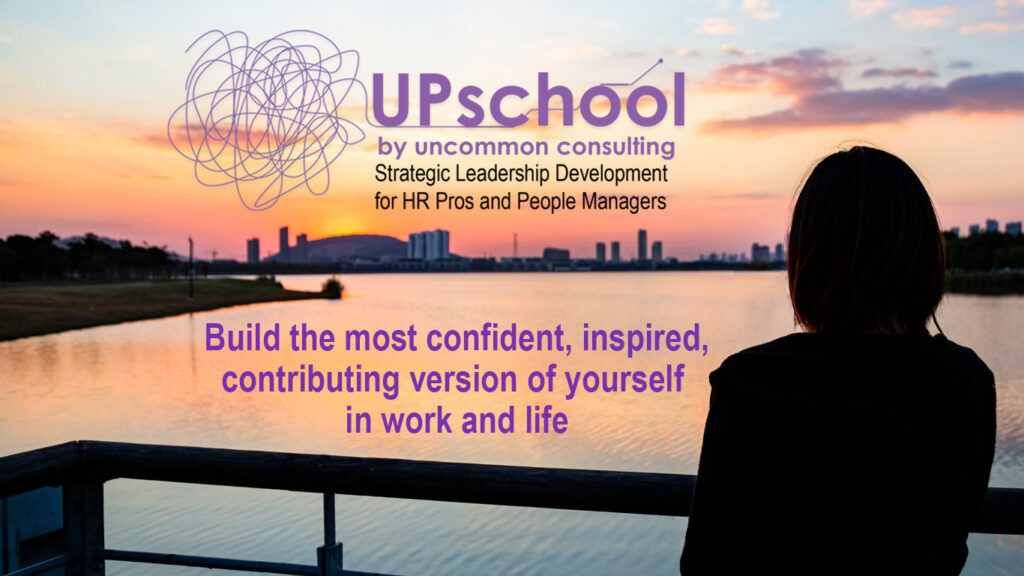I’m presented as part of NEHRA’s Learning & OD exchange the topic of “Bringing Online Content to Life” and as I’ve been working on the (highly interactive and most likely life changing) content, it occurred to me that pretty much everything we thought we knew needs to be re-examined.
Online delivery of learning and development has existed for decades. It was developed because we were able to develop it. We used it because we were able to use it or because it solved a problem that in-person instruction couldn’t (I’m old enough to remember the outrage from the twentieth century in-person instructor-led training crowd). Over time, online learning best practices were developed and the platforms, techniques, applications and possibilities all grew and improved.
2020, of course, has demanded an immediate and wholesale shift to online learning and, lucky us, there has been no shortage of handy resources served up to educate one’s self on these best practices so as to smoothly shift your in-person, strand up, instructor-led design to the at-your-fingertips, in-your-living-room convenience and reach of online.
But there are choppy waters ahead to endanger this smooth sailing. With not only everyONE but everyTHING moving online – from technology roll outs to grocery shopping – we are competing for mindshare, attention and engagement against the backdrop of as different a landscape as there ever was before. And just like there are better in-person deliverers of stand up training than others, we will need to be better online deliverers of stand OUT training.
Online training was developed in a world where it was an alternative to in-person training. Online training best practices were established in that same world. Online training in 2020 is being delivered in a world where there is no alternative. Best practices will need to be re-examined in this world.
How to Develop Stand OUT Online Training
I’m not an online training/learning technologist, instructional designer or expert – although I have decades of experience delivering impactful programs on all kinds of platforms. What I AM an expert in is moving people. I lay down paths for people to get inspired, motivated, connected, engaged and contributing. And it’s more of these paths that I think we need to build into 2020’s online training and add to the best practice list. I’ve started to put together a list. I’m thinking primarily of in-house delivery but much of this can be applied to coaches and consultants as well:
- Being super clear about what it’s for and how important it is. If you are just transferring the topics/learning you do in-person to online, stop. There is too much already. Ensure what you deliver is essential and relevant now. Put the rest in a closet somewhere for when people move on from simply trying to survive.
- Ensuring what you are delivering is aligned with what the participant is supposed to use it for. If you are delivering amazing training on how to participate in a collaborative, diverse and inclusive culture and your organization doesn’t have one for them to participate in, stop. Focus your energy elsewhere – like fixing the culture.
- Building connection in your design to where your participants are now. Review your examples, your stories, your assumptions. Imagine your participants – each of them. They are home – some alone and lonely, some with kids climbing on their head, some who are hoarders, some are between homes, getting a divorce, struggling with addiction, close to having a baby, suffering abuse, joyously blending families and figuring out how things will work, panicked that school isn’t starting… Their lives have changed and we cannot connect with them by pretending it hasn’t or not acknowledging – in our design and delivery – that it has.
- Meeting them where they are or will be. If you haven’t considered delivering in a way other than online, stop. We have amazing opportunities today to design connection and learning through a near infinite combination of media. Could you do a twitter course? What about Instagram, Snapchat, Q-stream, one-on-one coaching, peer-support, manager-led advising… Different delivery channels work for different people in different contexts for different reasons. What is there that might be more effective, more novel, less mind-numbing than Zoom?
- Bringing your whole fabulous self to the party. If you haven’t considered what you yourself – as a channel through which this learning is being delivered – is adding (or not) to the equation, stop. Where is the:
- Passion
- Personality
- Polish
- Creativity
- Quirkiness
- Curiosity
- Humor
- Talent
- …
that you’re going to use to connect with, understand and engage your participants? What is uniquely you that you will bring to bear on this nine hundred and seventy two thousandth Zoom call your participants have been on since March?
We need to re-examine goals. Re-order priorities. Expand our concept of “online”. Uncover new best practices. Re-engage in this work with our whole selves. Redefine success.
Be Uncommon.




 Everything you need to become everything you want
Everything you need to become everything you want